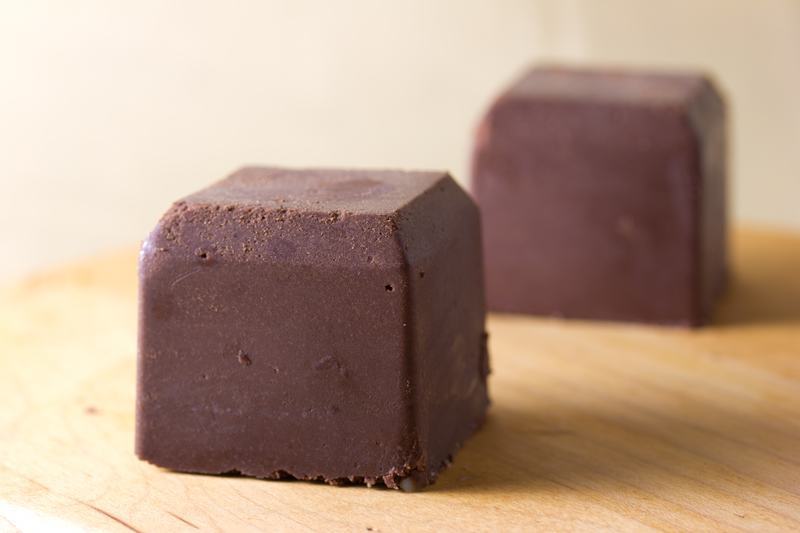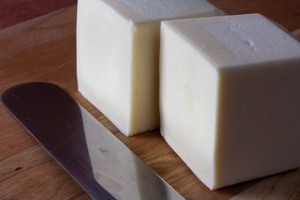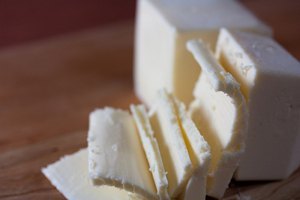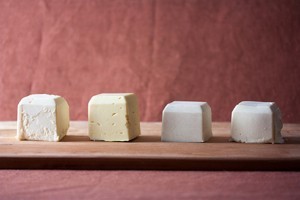Chocolate Vegan Butter
6

One of the benefits of Vegan Butter is that since you’re building it up from scratch, you can have full control of what you want it to be. It doesn’t have to go down the route of completely replicating traditional butter if you don’t want it to. Why would you want to replicate the texture of butter but not necessarily the flavor? Frostings and short doughs such as tart dough, pie crust and shortbread come to mind. You have much more variability in your end result if you can control flavor through your actual fat in addition to other ingredients. Imagine chocolate croissants where the butter is replaced with a fat that has the texture and flavor characteristics of both chocolate and butter. This is the reason I developed Chocolate Vegan Butter. Oh and you can spread it on toast too.
This version of vegan butter took considerably more work to develop than I thought. This is because I needed to dial in the chocolate flavor and butter flavor all while keeping the texture as close to traditional butter as possible.
The amount of chocolate added was important because it needed to be assertive but not too overpowering so the butter flavors could shine through. I also needed to tune in sweetness to enhance the chocolate flavors, but not too much or else the butter flavor would suffer. Finally, since chocolate has solids and cocoa butter doesn’t, the hardness of the vegan butter will change depending on the ratio of these two ingredients. The end result is a vegan butter that walks the line between butter and chocolate and can be used anywhere you’d normally use traditional butter. This results in the vegan butter having an extremely subtle sweetness.
Due to the different melting temperatures of cocoa butter and coconut oil, it's not possible to substitute coconut oil for the cocoa butter in this recipe and have the texture resemble traditional butter. In this case it would be excessively soft so it's not recommended.
Learn more about the food science behind Vegan Butter.
Due to the different melting temperatures of cocoa butter and coconut oil, it's not possible to substitute coconut oil for the cocoa butter in this recipe and have the texture resemble traditional butter. In this case it would be excessively soft so it's not recommended.
Learn more about the food science behind Vegan Butter.
Chocolate Vegan Butter Recipe
¼ cup + 2 teaspoons soy milk
¾ teaspoon apple cider vinegar
55 grams unrefined cocoa butter, melted
40 grams 100% unsweetened dark chocolate, melted
2 Tablespoons + 2 teaspoons granulated white sugar
¼ + ⅛ teaspoon salt
¼ teaspoon instant coffee powder
¼ teaspoon xanthan gum or ½ + ⅛ teaspoon psyllium husk powder
¼ vanilla bean (or ½ teaspoon vanilla extract)
¼ vanilla bean (or ½ teaspoon vanilla extract)
1) Curdle the soy milk
Place the soy milk and apple cider vinegar in a small cup and whisk together with a fork. Let it sit for about 10 minutes so the mixture curdles.
2) Whisk together the flavor building ingredients
In a medium saucepan, add the cocoa butter, unsweetened dark chocolate, sugar, salt and instant coffee powder. Whisk over medium-low heat until the fats are melted.
3) Whisk in the final ingredients
Whisk in the soy milk mixture from Step 1 followed by the lecithin, xanthan gum and vanilla. Whisk over medium-low heat until the sugar is dissolved and the mixture is smooth.
4) Transfer the Vegan Butter to a mold so it solidifies
Pour the mixture into a mold and place it in the freezer to solidify. An ice cube mold works well. The vegan butter should be ready to use in about an hour. Store it in an airtight container in the refrigerator for up to 1 month or wrapped in plastic wrap in the freezer for up to 1 year. This recipe makes 1 cup (215 grams), or the equivalent of 2 sticks Chocolate Vegan Butter.






